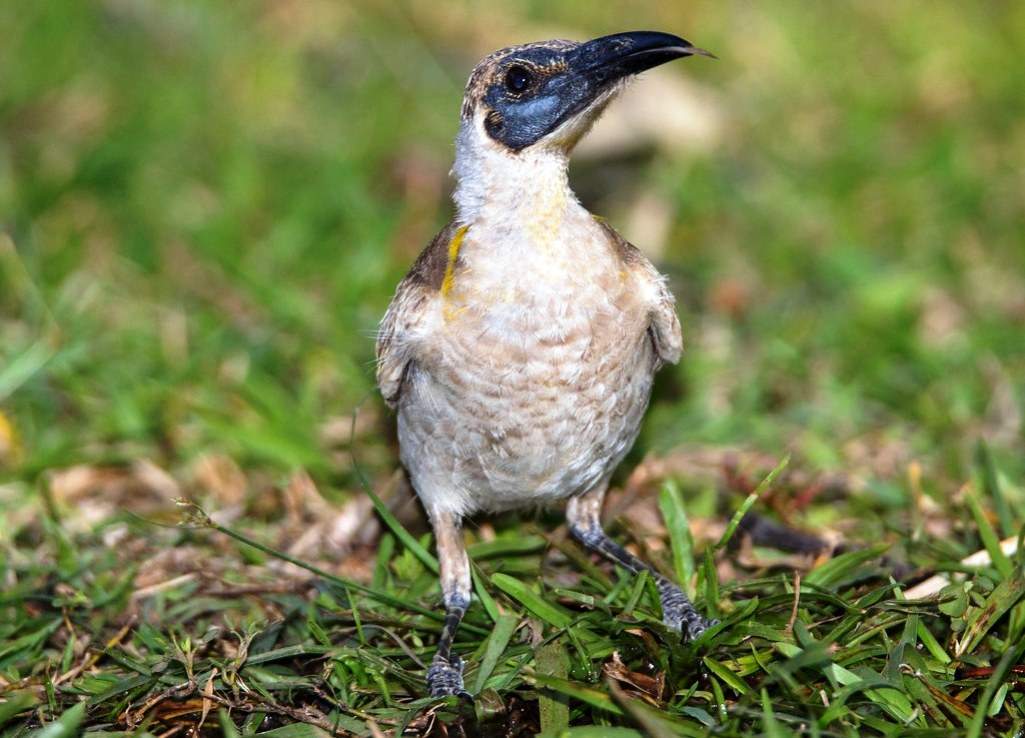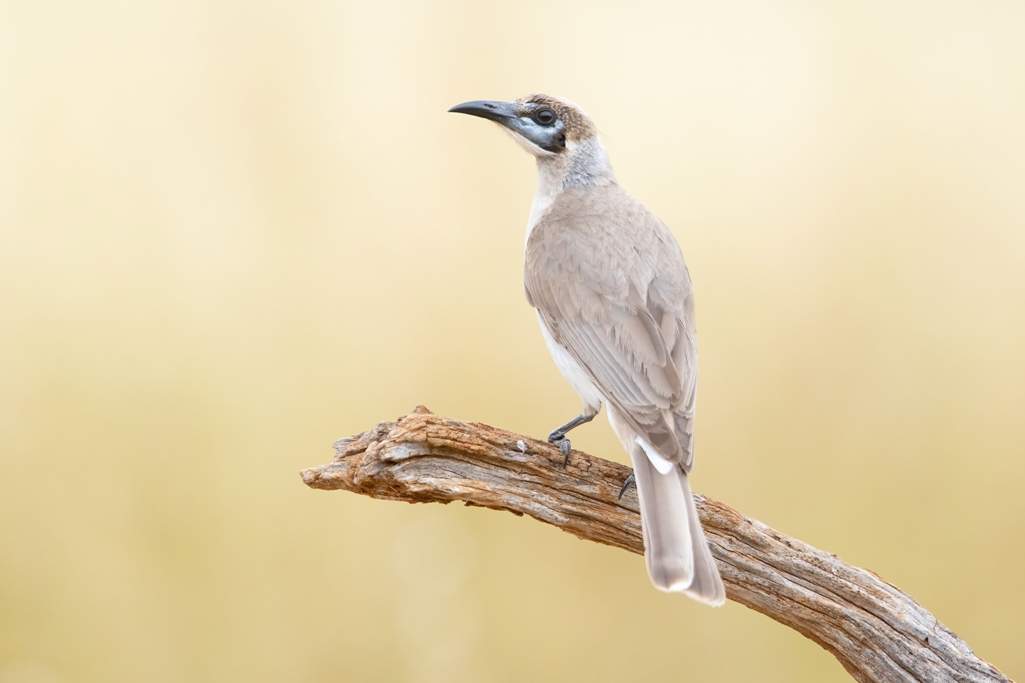The beautiful Little friarbird (Philemon citreogularis) lives in Eucalypt woodlands alongside very noisy and Silver-crowned Friarbirds around much of eastern and northern Australia. The little ones may feed with them but usually keep to a more open habitat. A smaller bird-and without a bill casque-it is the loser in any fighting and squabbling for flowering food branches, although it does chase off honeyeaters smaller than itself.
Rather, it is a specialist in exploiting smaller pockets of flowering eucalypts and paper barks rarely visited by the larger friarbirds. There it feeds in the outer foliage of trees and shrubbery, habitually hanging upside down to rifle nectar from blossom, and picking up fruit and insects which it may hawk after on the wing.

Little friarbird drink and bathes daily, skimming the surface of pools or fluttering through sprays, and rarely stray far from water. Like other friarbirds, it is a local, flower-following nomad across the north and largely migratory in the east.
A lot of populations south of about 25°S move to northeastern Queensland over winter and then return in spring to breed in small, loose groups along the river systems west of the Great Dividing Range.
It is also known as Yellow-throated Friarbird, and Little Leather head. The size of the Little Friar bird is about 256–290 mm. Both sexes are similar, but the male is a little larger. Also, the head is gray-brown; darker wash extends above the eye and around the neck; nape is a light, smoky gray, back and shoulders are gray-brown with blue tinge; and the rump is lighter. Moreover, the flight feathers are dark grey-brown with outer edges lighter; underwing coverts are scalloped brown and white.
The tail is mid-brown-gray, paler tip, lighter below. Chin has silky silver-white hair-like feathers; throat and upper breast grey with silver-white drop-streaks on breast; belly lighter; vent white. The eyes are mid-gray-brown, with black bill and dark slate-gray feet. The immature bird is similar to adults, but plumage and naked skin are lighter. Back, shoulders, and rump mottled with white. Chin and throat more often than not washed yellow; broad yellow scallops on sides of the breast; indistinct grey band across the breast.
Flight feathers indistinctly edged green-yellow. The call of Little Friar bird is raucous ar-cooo, rackety crook-shank; abrupt alarm call. Its jumbled notes when squabbling and feeding in groups. The song of the Little Friar bird is liquid che-wip, frequent with slight variations.
The breeding and nesting seasons are June-December; sometimes later. Nest is usually an open cup of shreds of bark, dry grass stems, and rootlets woven tightly and bound with pieces of cobweb, silky cocoons, and occasionally hair; lined with finer grasses and rootlets; suspended by the rim in hanging outer foliage 2–11 m above the ground or at times over water.
The clutch contains 2 or 3, occasionally four; pale pink to gray-pink colors eggs, that are well marked with lines, blotches, and spots of red-brown, slate, or purple-gray, at times forming a zone at the larger end; oval to tapered-oval, about 29 x 20 mm.
The distribution of the Little friarbird is open eucalypt forests and woodlands, visiting lowering Melaleuca in the north; inland along tree-lined watercourses and adjacent flowering scrub, and avoiding heavy forest. The bird is also found in New Guinea. There are 2 races: one across the north; the other in the east.
Read More: Black-crowned tchagra







